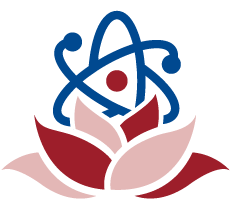| aldehyde ཨལ་ཌི་ཧ་ཡི་ཌི། | chem. An organic compound containing the group —CHO, formed by the oxidation of alcohols. | ཆང་རག་དང་འཚོ་རླུང་སྡེབ་སྦྱོར་བྱས་པ་ལས་གྲུབ་པའི་སྐྱེ་ལྡན་གྱི་འདུས་རྡུལ་ཞིག་སྟེ། རྫས་ཀྱི་ཚན་པ་ CHO དང་ལྡན། |
| alcoholic fermentation ཆང་རྫས་ཕབས་སྦྱོར། | biol. The type of fermentation occurring in yeast, in which glucose is broken down to produce ethanol and carbon dioxide | ཕབས་ཀྱི་ནང་དུ་བྱུང་བའི་ཕབས་སྦྱོར་གྱི་རིགས་ཏེ། མངར་བཅུད་ཆ་གསེས་བྱས་ཏེ་འབྲུ་ཆང་དང་ཁར་སྦོན་འཚོ་རླུང་གཉིས་ལྡན་སྐྲུན་པར་བྱེད། |
| alcohol ཆང་རག (མྱོས་རྫས་ཤིག) | biol. A colourless volatile flammable liquid which is produced by the natural fermentation of sugars and is the intoxicating constituent of wine, beer, spirits, and other drinks, and is also used as an industrial solvent and as fuel. | ཀ་ར་ལ་རང་བྱུང་གི་ཕབས་སྦྱོར་བྱུང་དུ་བཅུག་པ་ལ་བརྟེན་ནས་བཟོས་ཤིང་། རྒུན་ཆང་དང་། སྦི་རག ཨ་རག་གི་དྭངས་མ་ལ་སོགས་པའི་བཏུང་བའི་རིགས་ཀྱི་མྱོས་བྱེད་ཀྱི་གྲུབ་ཆ་ཡིན་པའི་དྭངས་ཤིང་རླངས་འགྱུར་བྱེད་སླ་ལ། མེ་འབར་སླ་བའི་གཤེར་གཟུགས་ཤིག་སྟེ། བཟོ་གྲྭའི་ནང་དུ་བཞུ་བྱེད་གཤེར་ཁུ་དང་བུད་རྫས་སུ་སྤྱོད། |
| alchemist གསེར་སྦྱོར་མཁན། | phys. Practitioner of the early form of chemistry called alchemy, which was associated with magic. The goal of alchemy was to change base metals to gold and to discover a potion that could produce eternal youth. | སྒྱུ་འཕྲུལ་དང་འབྲེལ་བའི་གསེར་འགྱུར་རྩི་སྦྱོར་དུ་འབོད་པའི་གནའ་བོའི་རྫས་འགྱུར་རིག་པ་ཉམས་ལེན་བྱེད་མཁན། གསེར་འགྱུར་རྩི་སྦྱོར་གྱི་དམིགས་ཡུལ་ནི་སྤྱིར་བཏང་གི་ལྕགས་རིགས་གསེར་དུ་བསྒྱུར་བ་དང་འཆི་འཇིག་བྲལ་བའི་ལང་ཚོ་བསྐྲུན་ཐུབ་པའི་བདུད་རྩི་གསར་གཏོད་བྱ་རྒྱུ་དེ་རེད། |
| albumen སྒོང་སྤྲི། སྒོང་དཀྲིས། སོན་དཀྲིས། | biol. The white of an egg, which consists mainly of albumin dissolved in water. | སྒོ་ངའི་ནང་གི་དཀར་མདོག་ཅན་གྱི་ཆ་ཤས་དེ་ལ་གོ་ཞིང་། དེ་ནི་གཙོ་བོ་ཆུའི་ནང་དུ་སྒོང་སྤྲི་བཞུ་བ་ལས་གྲུབ། |
| Albino zebra རྐྱང་ཁྲ་སྐྱ་བོ། | Biol. | |
| Albinism པགས་ཁྲ། | Biol. | |
| alanine ཨེ་ལ་ནིན། | chem. An amino acid which is a constituent of most proteins. | སྤྲི་རྫས་ཕལ་ཆེ་བའི་གྲུབ་ཆ་ཡིན་པའི་ཨེ་མི་ནོ་སྐྱུར་རྫས་ཤིག |
| akinesia འགུལ་སྐྱོད་མེད་པ། | biol. Partial or complete loss of motor control; a term usually used to refer to voluntary muscle movements only. | འགུལ་སྐྱོད་དང་འབྲེལ་བའི་སྟངས་འཛིན་གྱི་ནུས་པ་ཆ་ཙམ་མམ་ཡོངས་རྫོགས་བརླག་པ་ལ་ཟེར། བརྡ་ཆད་འདི་ནི་རང་འགུལ་གྱི་ཤ་གནད་འགུལ་བསྐྱོད་ཁོ་ནར་སྤྱོད། |
| airpuff startle stimulus ཕུ་འདྲོག་སློང་རྐྱེན། | neurosci. | |
| Airplane cabin གནམ་གྲུའི་ཤག་ཁུང་། གནམ་གྲུའི་དོས་ཁུང་། | phys. | |
| airfoil རླུང་གཤོག | phys. A part or surface, such as a wing, propeller blade, or rudder, that interacts with a flow of air to provide stability, rotation, lift, or thrust. | རླུང་གི་རྒྱུ་བ་དང་འཕྲད་པ་ལ་བརྟེན་ནས་བརྟན་ཆའམ། འཁོར་འགུལ། འདེགས་འགྱོག ཡང་ན་འབུད་ཤུགས་མཁོ་སྤྲོད་བྱེད་མཁན་གྱི་གཤོག་པའམ། འབུད་བྱེད་གཤོག་འཁོར་རམ། སྐྱ་གཤོག་ལྟ་བུའི་ངོས་སམ་ཆ་ཤས་ལ་གོ |
| airbag རླུང་རྐྱལ། | phys. A safety device in a motor vehicle consisting of a bag which instantly inflates in front of the driver or front-seat passenger on collision. | སྣུམ་འཁོར་རྡུང་ཁ་རྒྱག་པའི་སྐབས་སུ་སྐད་ཅིག་ཉིད་ལ་རླུང་གིས་ཁེངས་ཏེ་ཁ་ལོ་བ་དང་དེའི་འགྲམ་གྱི་འགྲུལ་བ་སྲུང་སྐྱོབ་བྱེད་པའི་ཁུག་མ་ཅན་གྱི་ཉེན་སྲུང་ཡོ་ཆས་ཤིག |
| air track རླུང་ལམ། | phys. An air track is an experimental apparatus that allows the study of motion with minimal interference by frictional forces. | རླུང་ལམ་ནི་བརྡར་ཤུགས་ཀྱི་ཐེ་ཞུགས་ཧ་ཅང་ཆུང་ཆུང་ཡིན་པའི་སྐབས་སུ་འགུལ་སྐྱོད་ལ་བརྟག་དཔྱད་བྱེད་དུ་འཇུག་པའི་བརྟག་དཔྱད་ཀྱི་ཡོ་ཆས་ཤིག |
| air sac རླུང་རྐྱལ། | biol. A thin-walled structure in the tracheal system of some species of fast-flying insects, increasing the efficiency of respiration and aiding in flight. | འཕུར་མགྱོགས་པའི་འབུ་སྲིན་གྱི་ཉེ་རིགས་འགའི་གློ་སྦུབས་མ་ལག་ནང་གི་ཤུན་པ་སྲབ་མོའི་བཀོད་པ་ཞིག དེ་ཡིས་དབུགས་འབྱིན་རྔུབ་ཀྱི་ནུས་པ་ཇེ་མཐོར་གཏོང་བ་དང། འཕུར་རྩལ་ལའང་ཕན་གྲོགས་བྱེད། |
